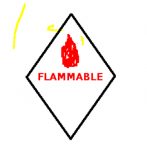Free online preparation for the California DMV Driver License Knowledge Test.
This test covers what to do when you approach a stopped emergency vehicle, tow truck, Caltrans vehicle and a waste service truck on public roads and highways? How to identify a vehicle that is transporting a hazardous load? How can drivers help relieve chronic traffic congestion? What is an aggressive driver? What can trigger road rage? What are the dangers of driving in heavy rain? When are roads the most slippery? How fast should you drive on wet and icy roads and roads covered by packed snow? What safety measures should you take when driving in high wind areas? How to drive in fog safely? How to drive safely after dark? What are the dangers of a flooded roadway? How to cross a flooded roadway? How to drive in Hill country or curves? What is a Traffic Break? How to help the officer conduction a Traffic Break?
Quiz-summary
0 of 21 questions completed
Questions:
- 1
- 2
- 3
- 4
- 5
- 6
- 7
- 8
- 9
- 10
- 11
- 12
- 13
- 14
- 15
- 16
- 17
- 18
- 19
- 20
- 21
Information
There are 21 questions in this quiz, you can check your answer after each question by clicking the “check” box on the bottom. You can also learn by just reviewing the questions and answers by clicking the “review question” on top.
To start click the “start quiz” below.
You have already completed the quiz before. Hence you can not start it again.
Quiz is loading...
You must sign in or sign up to start the quiz.
You have to finish following quiz, to start this quiz:
Results
0 of 21 questions answered correctly
Your time:
Time has elapsed
You have reached 0 of 0 points, (0)
| Average score |
|
| Your score |
|
Categories
- Not categorized 0%
- 1
- 2
- 3
- 4
- 5
- 6
- 7
- 8
- 9
- 10
- 11
- 12
- 13
- 14
- 15
- 16
- 17
- 18
- 19
- 20
- 21
- Answered
- Review
-
Question 1 of 21
1. Question
When you see a stopped vehicle on the side of a state highway or freeway, you must move over a lane or slow down (if not possible to change lanes) for all of the following vehicles EXCEPT?
Correct
Incorrect
-
Question 2 of 21
2. Question
Choose the correct answer:
A diamond shaped sign on a truck means that?
Correct
Vehicles transporting dangerous loads are marked with diamond shaped placards. Some of the placards have code numbers to let CHP and firefighters know what to do if the load is accidentally spilled.
These vehicles are required to stop before passing railroad tracks.
 Incorrect
Incorrect
Vehicles transporting dangerous loads are marked with diamond shaped placards. Some of the placards have code numbers to let CHP and firefighters know what to do if the load is accidentally spilled.
These vehicles are required to stop before passing railroad tracks.

-
Question 3 of 21
3. Question
All of the following help relieve traffic congestion, EXCEPT?
Correct
Poorly maintained vehicles may break down on the road and cause traffic congestion.
Incorrect
-
Question 4 of 21
4. Question
All of the following are behaviors of aggressive drivers EXCEPT?
Correct
Aggressive drivers often tailgate, drive slowly in the fast lane, “cut off” other vehicles and gesture to other drivers.
Incorrect
Aggressive drivers often tailgate, drive slowly in the fast lane, “cut off” other vehicles and gesture to other drivers.
-
Question 5 of 21
5. Question
When approaching a stopped waste service vehicle on a public road or highway you should?
Correct
New California traffic law (effective January 1, 2019) requires the driver of a vehicle, on a public street or highway, that is approaching or overtaking a stopped waste service vehicle, to pass at a safe distance without interfering with the operation of the waste service vehicle and with due regard to safety and traffic conditions.
Incorrect
New California traffic law (effective January 1, 2019) requires the driver of a vehicle, on a public street or highway, that is approaching or overtaking a stopped waste service vehicle, to pass at a safe distance without interfering with the operation of the waste service vehicle and with due regard to safety and traffic conditions.
-
Question 6 of 21
6. Question
All of the following can cause other drivers to behave aggressively EXCEPT?
Correct
Incorrect
-
Question 7 of 21
7. Question
When driving in heavy rain at speeds of 50 mph or higher, the main danger is?
Correct
In heavy rain at high speed the tires lose contact with the road and your vehicle will be riding on water ( hydroplaning). A slight change of direction or a gust of wind may cause skidding and loss of control over the vehicle.
If your vehicle starts to hydroplane, you should NOT apply the brakes but allow the vehicle to slow down gradually.
Incorrect
In heavy rain at high speed the tires lose contact with the road and your vehicle will be riding on water ( hydroplaning). A slight change of direction or a gust of wind may cause skidding and loss of control over the vehicle.
If your vehicle starts to hydroplane, you should NOT apply the brakes but allow the vehicle to slow down gradually.
-
Question 8 of 21
8. Question
When are roads the most slippery?
Correct
When it just starts to rain, after a long dry spell, roads are the most slippery because the oil and dust have not yet washed away.
Incorrect
When it just starts to rain, after a long dry spell, roads are the most slippery because the oil and dust have not yet washed away.
-
Question 9 of 21
9. Question
When driving on a wet road you should?
Correct
Incorrect
-
Question 10 of 21
10. Question
When driving on an icy road you should?
Correct
Incorrect
-
Question 11 of 21
11. Question
On a road with packed snow you should?
Correct
Incorrect
-
Question 12 of 21
12. Question
All of the following road surfaces are especially slippery when wet EXCEPT?
Correct
Roads in the shade freeze first and dry out last, therefore they are more slippery than roads in the sun.
On a hot day, the heat causes the oil in the asphalt pavement to rise to the surface and when it starts to rain, the wet surface becomes very slippery because the oil floats on the water.
Incorrect
Roads in the shade freeze first and dry out last, therefore they are more slippery than roads in the sun.
On a hot day, the heat causes the oil in the asphalt pavement to rise to the surface and when it starts to rain, the wet surface becomes very slippery because the oil floats on the water.
-
Question 13 of 21
13. Question
All of the following are precautions while driving in high winds EXCEPT?
Correct
Do NOT use cruise control in high wind areas because it does not allow you to reduce your speed rapidly should a sudden gust of wing occur.
Incorrect
Do NOT use cruise control in high wind areas because it does not allow you to reduce your speed rapidly should a sudden gust of wing occur.
-
Question 14 of 21
14. Question
All of the following are true EXCEPT?
Correct
When driving in fog you should use the LOW-BEAM headlights, not the high-beam headlights.
Incorrect
When driving in fog you should use the LOW-BEAM headlights, not the high-beam headlights.
-
Question 15 of 21
15. Question
All of the following are true EXCEPT?
Correct
You must turn on your headlights if visibility is less than 1000 feet.
You must turn on your headlights from 30 minutes after sunset to 30 minutes before sunrise.
Incorrect
You must turn on your headlights if visibility is less than 1000 feet.
You must turn on your headlights from 30 minutes after sunset to 30 minutes before sunrise.
-
Question 16 of 21
16. Question
If you can not see farther than 100 feet ahead during a heavy rainstorm or snowstorm, you should not drive faster than?
Correct
Incorrect
-
Question 17 of 21
17. Question
Dangers of a flooded roadway include all of the following EXCEPT?
Correct
Incorrect
-
Question 18 of 21
18. Question
If you have no other option but to drive through a flooded road, you should do all of the following EXCEPT?
Correct
Incorrect
-
Question 19 of 21
19. Question
All of the following are true EXCEPT?
When approaching a hill or curve and you are unable to see beyond them:
Correct
When approaching a hill or a curve and the view beyond it is blocked, you should slow down to a speed that will allow you to stop for any hazard.
Incorrect
When approaching a hill or a curve and the view beyond it is blocked, you should slow down to a speed that will allow you to stop for any hazard.
-
Question 20 of 21
20. Question
What does it mean If you see a law enforcement vehicle (CHP) with rear emergency lights, driving in a zigzag motion across a highway?
Correct
A traffic break is created by Highway Patrol cars with their emergency back lights on. Traffic breaks are used to slow or stop traffic in order to remove hazards from the road, prevent collisions in very heavy traffic or fog and to conduct emergency operations.
Incorrect
A traffic break is created by Highway Patrol cars with their emergency back lights on. Traffic breaks are used to slow or stop traffic in order to remove hazards from the road, prevent collisions in very heavy traffic or fog and to conduct emergency operations.
-
Question 21 of 21
21. Question
All of the following assist an officer that is conducting a traffic break EXCEPT?
Correct
You are not allowed to pass a patrol car that is conducting a Traffic Break as long as the emergency lights are on and as long as it is driving in a zigzag manner.
Incorrect
You are not allowed to pass a patrol car that is conducting a Traffic Break as long as the emergency lights are on and as long as it is driving in a zigzag manner.
Below are links to the site contents page and next test:
California Driver License Practice Test No. 15
If you want to create your own website and are looking for a web hosting service, I recommend Biz.nf. I have been their customer for more than 5 years, they are a user friendly server, have very affordable prices, excellent support and they offer free web hosting (so you can try them out for free).
You can signup with them by clicking on the link below.
© 2019 – 2024, tredmate.com. All rights reserved.
